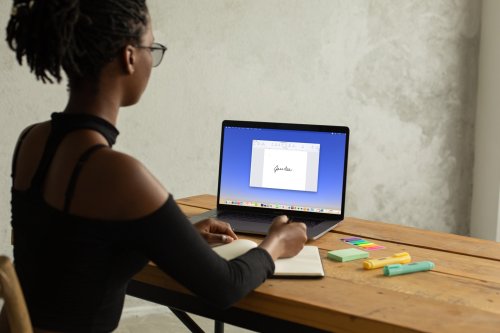
Rename style: Renames the existing style.Clear Override: This removes all of your formatting and returns the style to the original.If your colleague hands you a document to work on with headings that are customized to have blue, extra bold, Palatino letters with 1.2 lines of spacing, you can define an existing heading style from that text and then use it in your document. Define from selection: Useful for or when you want to copy the exact characteristics from another place in your document.VO-right until you hear “Menu”.Īctivate the menu. Interact again with the style you want.Interact with the table and VO-up or down to locate the appropriate style.We will tackle the New Style button in a moment. Here you will find the New Style button and the Styles table. If you’ve waited until the end to format, VO will say something like “Body selected, paragraph Styles.” VO-space. VO-J to the formatter and VO-right until you land on the Style button which will announce what style you’re currently using.Pages is smart enough to know to format the text in that paragraph without highlighting. Or, move the insertion point to the heading or paragraph you want to format. Highlight the text you wish to format with a style.Let’s use keyboard shortcuts to speed up the work. Jumping back and forth between the formatter and your document every time you need to bring up a new format-especially for a long document-can be time-consuming. An essay for school may require you to set quoted material in from the margins and single-space the quotation while the body remains double-spaced. For example, a business plan might require you to use a level 1 heading, a level 2 heading, bulleted lists, numbered lists and explanatory text in italics.

This is useful for when you have two or three different styles in a document and you need to quickly format text.

It’s possible to set keyboard shortcuts for styles. Turn on hyphenation, add page numbers, header and footer text and more. Set font, size, colour, spacing and so on. Format headings, body text, quoted material, lists and so on. Some text may spill over to a new page or be pulled up. As you edit and correct, Pages will move text ever so slightly to prevent widows and orphans.

Remove things like double spaces, extra characters from when your cat ran across your keyboard and so on. Get all of the words, even if they’re the wrong ones. In the world of typography, formatting adds those design flourishes that add the signature look to your work, just as adding EQ, delay and compression adds the signature sound to your recording. For us audio nerds, this is analogous to recording all of your audio, editing it, cleaning it and then adding your effects like reverb and compression. More on Your Formatting FlowĪs I mentioned in my last guide, it’s a great idea to format your document last.

Nothing here requires advanced VoiceOver skills, however you may wish to use hotspots to jump around a bit faster in Pages. In this guide, I’ll describe how you can quickly apply styles and customize them in your documents. In my last guide on Pages and design, I described how visual documents appear with font variations and how you can manipulate fonts, sizes, styling and more so your documents can look aesthetically pleasing to your sighted colleagues.


 0 kommentar(er)
0 kommentar(er)
